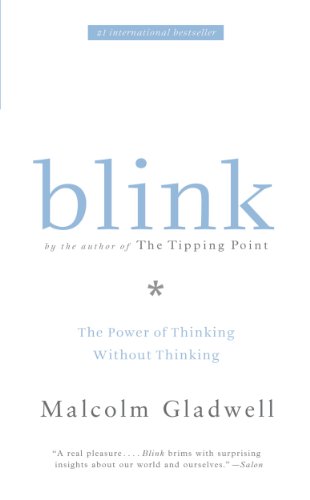

This article is an excerpt from the Shortform summary of "Blink" by Malcolm Gladwell. Shortform has the world's best summaries of books you should be reading.
Like this article? Sign up for a free trial here .
Are first impressions accurate? How much can you tell about a person’s character based on a first impression?
They say that first impressions can be deceiving. However, although first impressions are based on a very small segment of information, they can also be incredibly accurate, even more so than “second,” “third,” or even “fourth” ones.
Keep reading to learn about the power of first impressions, and why they are often more accurate than people think.
The Power of First Impressions
Are first impressions accurate? According to Malcolm Gladwell, the author of Blink, first impressions can actually be very accurate because they are based on a very “thin slice” of information about them. Thin-slicing is using a small segment of information (for example, a 10-second video) to make a quick decision. As evidence that it works, Gladwell describes a study by Nalini Ambady and Robert Rosenthal that looked at student evaluations of teachers. These researchers found no significant difference between the evaluations of students who had taken a whole semester-long class with the teacher and those who had watched a video of less than 30 seconds of the same teacher.
(Shortform note: Gladwell doesn’t attribute the term “thin-slicing” to anyone in particular, and he’s often credited with coining it. But the idea of taking “thin slices” of experience comes from a 1992 paper by Ambady and Rosenthal that reviewed research on how people interpret short segments of non-verbal behavior. They showed that people who made judgments about someone’s honesty and professional competence based on a 30-second video were just as accurate as those who watched a 5-minute video.)
| Thin-Slicing Offers Insights into Human Behavior Research interest in thin-slicing has spread to many fields, including interpersonal relationships, clinical evaluations, parenting, and the legal system. There’s also considerable overlap with studies of body language—for example, researchers have found that we can accurately judge someone’s socioeconomic status based on thin slices of their body language. We do this by looking at the degree to which they show engagement with others: “Engagement cues,” such as nodding and smiling, tend to reflect low socioeconomic status, while people with higher socioeconomic status are more likely to show “disengagement cues” such as doodling. In general, you’ll be judged more positively on first impression if you make eye contact, avoid fidgeting, smile, and make open-handed gestures. A stiff posture, frowning, and looking down will lead people to judge you negatively. Researchers are even trying to link how we appear in thin-slicing judgments to our genes. For example, one recent study found that people who are genetically predisposed to have more active oxytocin receptors are more likely to express prosocial behavior and positive body language (e.g., nodding their heads and smiling). This in turn makes people judge them more positively when thin-slicing. |
When we thin-slice someone on a first impression, our unconscious mind zeroes in on the most important pieces of information and disregards the rest. This is why thin-slicing is often so accurate—it doesn’t involve processing a lot of information.
| Do We Thin-Slice Potential Romantic Partners? Gottman thin-slices long-term relationships to gain insights into their history, but what about the thin-slicing that we engage in when screening potential new partners? Tinder wasn’t around when Gladwell wrote Blink, but it’s a textbook example of making fast decisions based on very little information. Researchers haven’t investigated thin-slicing behavior on Tinder, but they have looked at what happens in speed dating sessions. Speed dating, which was invented in the late 1990s by Rabbi Yaacov Deyo to help connect Jewish singles in Los Angeles, is an ideal context for thin-slicing studies. For example, researchers found that female speed daters (in a heterosexual speed dating scenario) were faster than the males to notice negative qualities in their dates. In another study, researchers compared the qualities that people said they were looking for before the speed dates with the partners they actually chose to see again, finding that we’re not very good at identifying what we like in people until we meet them—perhaps a reason to give someone a chance if you’re sitting on the fence. |
———End of Preview———

Like what you just read? Read the rest of the world's best summary of "Blink" at Shortform . Learn the book's critical concepts in 20 minutes or less .
Here's what you'll find in our full Blink summary :
- How you can tell if a marriage will fail, within 3 minutes
- Why your first impressions are usually surprisingly accurate
- The dark side to making first impressions, and how to avoid the,






